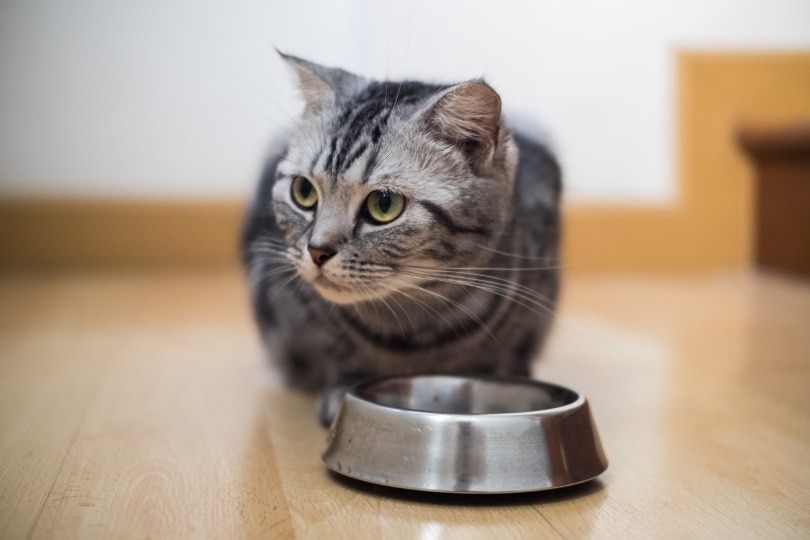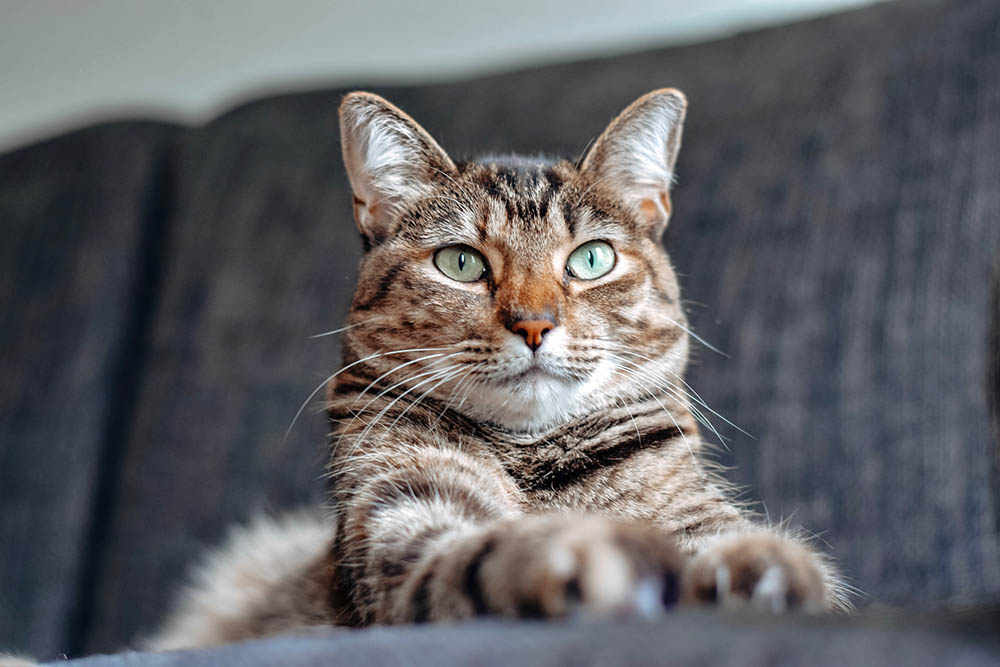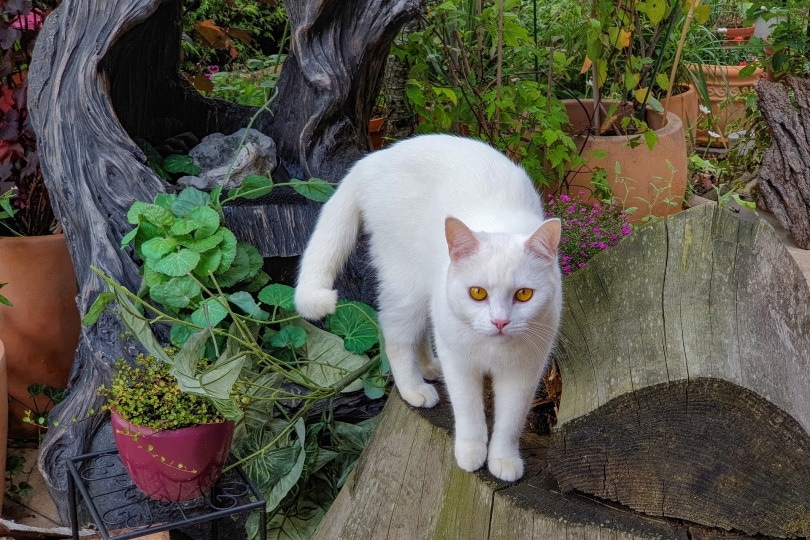Can Cats Eat Blueberries? Vet Reviewed Benefits & Precautions
By Oliver Jones
Updated on

Blueberries are considered a superfood in human nutrition. Loaded with nutrients and antioxidants, they are healthy treats for the human body.
But can your cat eat blueberries? Although they can’t taste the fruit flavor, cats can eat blueberries safely. As obligate carnivores, their diet doesn’t necessarily require fruits and vegetables, but they can get health benefits from foods like blueberries.
Like any other human food, moderation is key. Let’s take a look at the health benefits and how you can safely feed blueberries to your cat.
Is it Safe for Cats to Eat Blueberries?
Blueberries are among the few human foods that your cat can ingest safely. While they can’t taste the flavor, cats may be excited to eat this fruit due to its moist texture.
Health Benefits
On top of being safe for cats to consume in moderation, blueberries have health benefits for your cat. Here are a few of them.
Antioxidants
Blueberries contain the highest level of antioxidants among all fruits. In particular, they contain flavonoids known as anthocyanins, which are responsible for that beautiful color and are among the most powerful antioxidants. Antioxidants help reduce cell oxidative damage, thus keeping your pet healthy.
Blueberry extract is also commonly used as an ingredient in cat foods.
Water
Blueberries are approximately 85% water, making them excellent options for keeping your pet hydrated. If your cat’s diet is made up of dry kibble, you can add blueberries to help with hydration. That said, you should ensure that your cat drinks fresh water, as when your cat is well hydrated, they are protected from common feline diseases like kidney stones, chronic kidney disease, and urinary tract infections.

Fiber
These fruits are also a source of fiber, which could help with digestion. Adding a few blueberries to your pet’s diet will keep the digestive tract moving and the stomach full for longer, especially if you are trying to help them lose weight. Dietary fiber also has an overall protective effect against several diseases.
Micronutrients
Blueberries are known to have high levels of vitamins C and K, choline, lutein, and zeaxanthin. These micronutrients play different roles in maintaining your cat’s health; for example, lutein and zeaxanthin protect the eye structures, reducing the risk of developing eye disease.
How to Feed Your Cat Blueberries
Here’s how you can safely feed your cat blueberries.
Serve Only a Few
In the daily diet, blueberries should be served in moderation. Despite coming with health benefits, they should not constitute your cat’s primary diet.
According to the health and weight of your pet, it needs a complete, well-balanced diet, which can be canned food, dry kibble, or a vet-approved home-cooked diet. Also, avoid too many treats to keep your pet healthy.

Serve Them Fresh or Frozen
Your cat will enjoy blueberries whether they are fresh or frozen. Make it easy to eat by squishing them.
How to Introduce Blueberries to Your Cat
If your cat has never eaten blueberries, here’s how to safely introduce this fruit to their diet.
1. Consult the Vet
Despite being safe for cats, it’s always best to talk to your vet about the appropriate foods before introducing them to your pet.
2. Calculate the Portions
Based on your cat’s caloric needs, you can use that to determine how many blueberries your cat should consume over a set period. The amount should align with the nutritional needs, body weight, and health.
3. Prepare the Berries
This process involves washing blueberries thoroughly and removing them from the stems. After this, you can either cut them into half or smaller sizes or smash them so your cat can smell the juices. Some cats also enjoy eating frozen blueberries as crunchy snacks. However, to avoid your cat choking on the berries, especially kittens, it’s best to mash them into a paste.
If your cat is not interested in these options, you can try mixing raw blueberries or mashed cooked blueberries into your cat’s food. However, if they don’t eat any of these, there’s no need to force them.
4. Monitor Your Cat
Introducing a new treat or food to your cat can cause gastrointestinal issues. It’s best to introduce the treats in moderation so you can monitor any changes or problems immediately and seek medical intervention if needed.
Potential Health Concerns from Blueberry Consumption
For first-timers, blueberries may cause a stomach upset. Since their primary diet is mainly meat and lots of protein, some health risks are involved in introducing blueberries to your pet’s diet.

Gastrointestinal Reactions
Although cats can eat and digest various fruits and vegetables, eating too many could potentially cause stomach upset. They may also experience indigestion, vomiting, and diarrhea.
Diabetes
Blueberries have low levels of sugar content. However, even this amount can be harmful to your pet, especially if they have diabetes. If this is the case for your pet, it might be better to avoid these and any other fruits.
How Many Blueberries Can a Cat Consume?
Snacks and treats should not make up more than 10% of your cat’s diet. Therefore, as a start, you should first give your cat one berry to monitor how they react before adding more. For an adult cat, two or three berries make sense but should also not be served daily.
In addition, the number of berries your cat eats in a day should also depend on other factors such as the cat’s weight, other treats they are feeding on, and their overall health.
Final Thoughts
Blueberries are nutritious fruits that can be added to your cat’s diet. However, as with any other treats, they should be included in small quantities according to the cat’s health. Before making them a part of your pet’s nutrition plan, you should consult your vet on the ideal quantity. After consumption, you’ll need to closely monitor them for any adverse reactions.
Also, remember that not all cats will like blueberries despite the benefits. If you notice that your cat is avoiding this fruit, there’s no point in forcing them to eat it.
Looking for more information on what your cat can eat?
Featured Image Credit: congerdesign, Pixabay














